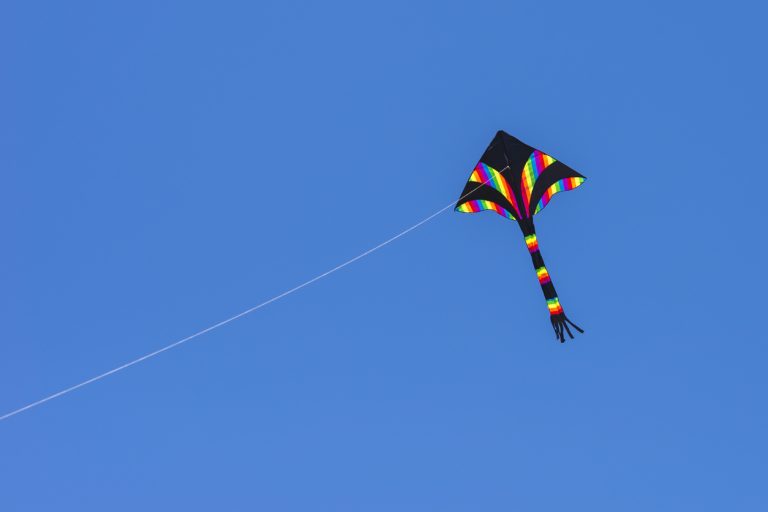Can A Kite Be A Rectangle? (We’ve Got The Answer)
There always seems to be something liberating about flying a kite. As long as structurally stable, most kites can provide one with immense creative freedom absent from other mediums. Speaking of creativity and design, can a kite be a rectangle?
Kites across cultures have different shapes including rectangles, colors, and sizes. While there seems to be a certain “standard” for kites flown in the west, there are almost no limitations in the kite’s shape. It may be in an animal form, or it can be like shapes (i.e., rectangle, square).
You can make a kite into different forms as long as it provides a touch of culture, history, and creativity. As your kite guru, we will talk about the types of kites made worldwide.
The Types And Shapes Of Kites Around The World
Kites are deeply engraved in various cultures worldwide, especially in Asia. According to Britannica, kites first appeared three thousand years ago in China. Due to China’s tendency to involve in trade, the kite and its legacy spread across Asia. (source)
Today, communities and societies celebrate kite flying as part of their culture, as a part of their worship, and as an act of leisure. Because of this, kites have evolved in shape and form to reflect their history and cultural origins. This article will discuss the eight types of kites flown around the world.

Types Of Kites
- Indian / Malay Kite (Diamond Kite)
- Flat Kite
- Foil / Parafoil Kite
- Sled Kite
- Rokkaku: Japanese Fighter Kite
- Koinobori: Japanese Koi Kite
- Delta Kite
- Cellular / Box Kite
The Malay Kite / The Indian Kite (Diamond Kite)
The diamond kite (also called the Indian kite or the Malay kite) is the most recognizable worldwide. One of the reasons is its remarkably modest shape and form, which is in the shape of a diamond, thus the name.
Because of this, it is very cheap to reproduce and make. (source)
Not only is it popular, but it is elementary to use and navigate as well. It is why most beginners and kids stick to this type of kite. It’s a low-risk, low investment kite that delivers an authentic kite flying experience.
What’s so good about this kite is that even with intense turbulence, the diamond kite can still fly with relative ease. However, it can be tough to fly and navigate with steep line angles. Fun fact: the kite shape used in mathematics classes is based on the diamond kite. (source)
Non-Bowed Kite: The Flat Kite
Most kites are bowed, like the diamond kite. There are many reasons for this, and one of them is to improve stability. However, not all kites are bent; enter the flat kite! (source)
The flat kites can come in different shapes, from rectangles to squares, and even round! You can tie them to trains of kites to look like a dragon or a caterpillar.
However, unlike bowed kites, flat kites do not have a curve to provide stability. Because of this, for them to possibly fly, they need tails attached. Without these tails, they will not have enough stability and drag to fly.
Extreme Sports: Foil / Parafoil Kite
Parafoil kites are a highly unique type of kite. Unlike most kites, parafoil or foil kites have no frames. Because of this form factor, they look less like a kite and more like a parachute. (source)
Another characteristic of parafoil kites is that they are made out of two skins, one upper and one lower, compared to most kites made out of one skin (except for box kites). They have two coats because these skins are sewn together to create inflated cells that help with the lift.
The cells are inflated when the kite is taken to the sky, creating an arching form. Because of the design, they can handle heavyweights like people and objects. Speaking of people, unlike most kites made for leisure or cultural reasons, parafoil kites are kites made explicitly for extreme sports.
People created heavy-duty versions of parafoil kites called paragliders for surfing. In addition to that, parachutes are also roughly based on parafoil kites. (source)
The American Fishing Kite: Sled Kite
Sled kites are different breeds of kites that specialize in industrial uses. They are very similar to parafoil kites but are ten times simpler.
Sled kites are used for fishing to take a fishing line away from an angler. They are often sold in fishing supply stores as well. Because of this, they are often not very colorful and look like a sheet of plastic with strings tied to them.
The sled kite is of western origin and came after world war two, invented by William Allison. These kites were initially used as acrobatic stunt kites. (source)
The Japanese Kites: Rokkaku (Fighting)
Rokkakus are Japanese fighter kites that specialize in reliability and weight. These kites are durable by design and usually are six-sided in form. When it comes to stability and reliability, they are unbeatable.
Rokkakus are most often left unstyled, although some used to paint paintings of the samurai to symbolize wealth. The rokkaku also has a vast surface area, ideal for aerial photography. (source)
To fight with other kites properly, Rokkakus use strings made out of resin which turns them into blades. The objective of kite fighting is to slice the lines of other kites and bring them to the ground. (source)
The Japanese Kites: Koinobori (Festival)
Japanese koinobori kites, also called Japanese carp kites, are a kite that features a colorful design and fly using a pole instead of a string. It makes the koinobori different from most traditional kites. The koinobori is commonly found flying on lower altitudes and does not move as liberally compared to other kites. (source)
In terms of aesthetics, Koinobori is strictly limited to its koi form. Although they can come in different colors, they do not come in different shapes. These rules imply that such kites cannot be rectangular, nor can they be triangular.
Historically, these types of Japanese kites were primarily flown during the aristocratic ruling of the Samurais and were used when they would charge into battle. They also use the flag to celebrate victories. (source)
Today, however, these kites are flown for a different purpose. On May 5 of every year, Japanese families hang one of these kites representing each of their children to commemorate children’s day.
The Flying Standard: Delta Kites
The delta kite is pretty similar to the Indian kite, both being very recognizable even amongst non-kite enthusiasts. Delta kites are often in a triangle shape (these kites cannot be rectangles) and have three braces from the top, which diverge from one another to create a wing. (source)
The delta kite is one of the most accessible types to fly. Even with a light breeze, delta kites can soar without difficulty. Moreover, they are relatively elementary to control even under turbulent weather.
It’s Three Dimensional: Box Kite / Cellular Kite
Unlike most kites that appear two-dimensional when flown, cellular kites are three-dimensional and take great pride with such identity. Cellular kites can be rectangles but in cubes to sport their three-dimensional architecture.
Some cellular kites can have elaborate structures, while some can be as simple as being box-shaped (thus the name box kites). Because they are three-dimensional, they have a lot of skeletal frameworks, making them much heavier. Because of their weight, they need stronger winds and better lifts to fly successfully.
Summary
You can make kites in any shape or form, and more novel forms may come in the future. Indian kites are traditional kite-shaped flyers, while the flat kite is a non-bowed variety. Parafoil kites have two skins that inflate when flown, similar to the sled kite, with the sled kites having only one skin.
The rokkaku (fighting kite) and the koinobori (koi/carp kites) are Japanese kite varieties. Delta kites are triangular, while the box kite is a three-dimensional variation of the flat kite.
Frequently Asked Questions
- Can A Kite And A Rectangle Be Congruent?
A kite consists of two pairs of adjacent congruent sides in geometry. Meanwhile, a rectangle consists of two pairs of opposite congruent sides. The question is: can a shape be considered a kite and a rectangle at the same time?
The answer is yes! A square is a shape made with four congruent sides, making it have two pairs of adjent congruent sides (kite) while still having two pairs of opposite congruent sides.
- Do Kites Have Cultural Relevance?
Kites such as the Japanese, Chinese, and Indian varieties play a significant role in ceremonies and festivals. Because they are so, they play an immense cultural significance.
Sources
- Maxwell, E., “Kite Aeronautics,” Britannica English Dictionary, July 27, 2018. https://www.britannica.com/topic/kite-aeronautics
- “KiteTypes,” Sheffield Hallam University, Last Accessed November 2, 2021. https://teaching.shu.ac.uk/ds/rdp/window/kites/ki_start.htm
- Jacqueline, Z., “The 8 Types of Kites and How to Fly Them”, Recreation Insider, March 12, 2021. https://recreationinsider.com/kites/types-of-kites/
- “Kites In The Classroom,” Bachelors, Last Accessed November 3, 2021. https://www.batchelors.net/kites-in-the-classroom/9-kites-a-guide-for-students.html
- Rose, M., “What Is A Parafoil Kite?” Great Canadian Kite Company, November 3, 2016. https://www.canadiankitecompany.com/blogs/tie-to-the-sky/what-is-a-parafoil-kite
- Semple, K., “For Afghan boys and men, kite flying is a way of life,” The New York Times, December 14, 2007.https://www.nytimes.com/2007/12/14/world/asia/14iht-kites.4.8751433.html
- Przybylek, S., “Japanese Carp Kites: History & Meaning,” Study.com, June 14, 2021. https://study.com/academy/lesson/japanese-carp-kites-history-meaning.html







